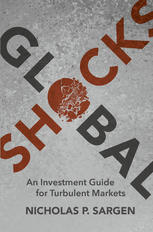

Most ebook files are in PDF format, so you can easily read them using various software such as Foxit Reader or directly on the Google Chrome browser.
Some ebook files are released by publishers in other formats such as .awz, .mobi, .epub, .fb2, etc. You may need to install specific software to read these formats on mobile/PC, such as Calibre.
Please read the tutorial at this link: https://ebookbell.com/faq
We offer FREE conversion to the popular formats you request; however, this may take some time. Therefore, right after payment, please email us, and we will try to provide the service as quickly as possible.
For some exceptional file formats or broken links (if any), please refrain from opening any disputes. Instead, email us first, and we will try to assist within a maximum of 6 hours.
EbookBell Team

5.0
18 reviewsThis book, which is written from a practitioner’s perspective, fills the void by providing the reader with a toolkit and guiding principles to manage money when markets are in turmoil. It features ten case studies beginning with the breakdown of the Bretton Woods fixed exchange rate system through the current situation in which investors are assessing whether China could become the next bubble. Each chapter discusses how the respective crisis or bubble unfolded at the time, the way policymakers and markets responded, and the optimal strategy for positioning portfolios.
The goal is to share these experiences and the lessons from them, so investors will be better prepared for future shocks. The opening chapter explores whether there are common patterns in movements of interest rates and exchange rates that investors can exploit. A conceptual framework is presented that helps explain why this is the case for traditional currency crises, but less so for asset bubbles.
The concluding chapter ties the episodes together and considers how the nature of financial crises has evolved since the collapse of Bretton Woods. We cite factors that make it difficult for policymakers and investors to detect problems in advance of an asset bubble. The good news is investors get a second chance to outperform when markets are over-sold; however, they need to formulate a strategy to limit the damage during the sell-off phase and to capitalize on the eventual recovery.